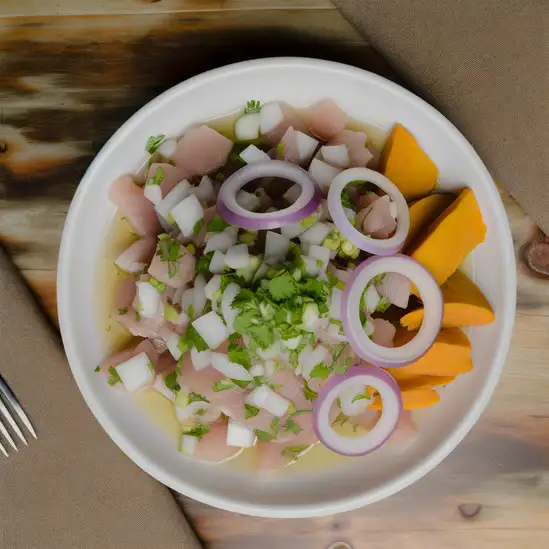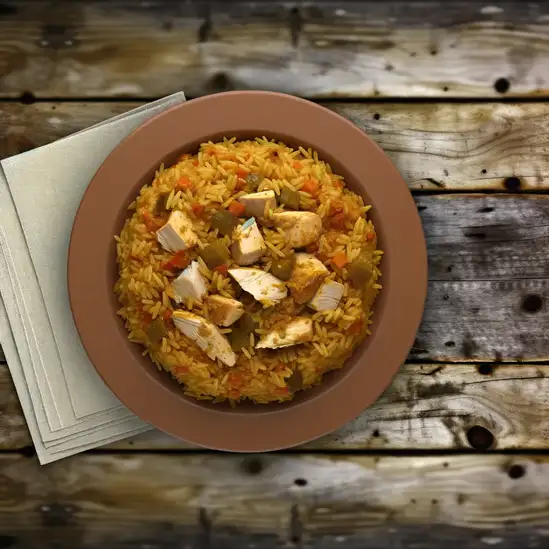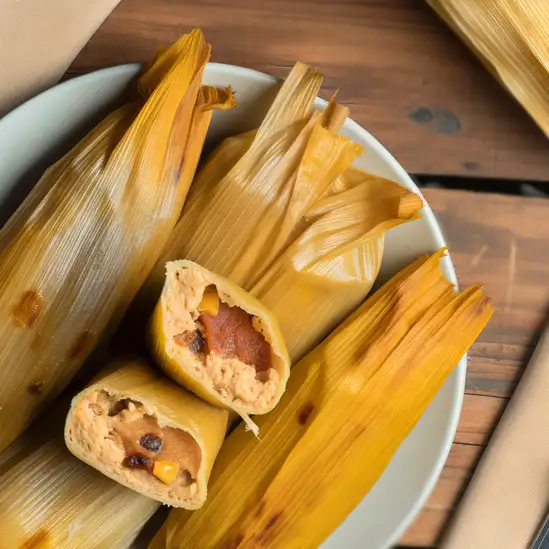



San José pulses with an energy that’s both vibrant and inviting,like a city that’s awake and alive but never rushed. When you stroll through its streets,you’ll catch the hum of lively markets where vendors call out in warm,melodic Spanish,offering everything from fresh tropical fruits to handmade crafts. The scent of rich coffee mingles with the earthy aroma of rain-soaked pavement,grounding you in a place that’s both urban and deeply connected to nature. What makes San José truly special is its blend of old and new. Colonial architecture stands shoulder to shoulder with colorful street art,telling stories of Costa Rica’s rich history and its creative spirit. You can spend your morning wandering through the National Theater,marveling at its ornate details,then grab a bite at a bustling sodalocal spot where the flavors of gallo pinto and sweet plantains dance on your tongue. The city’s rhythm is relaxed but purposeful,a reflection of the Tico way of life that values "pura vida" — pure life — in every moment. At night,the city softens into a cozy glow. Cafés and bars fill with laughter and live music,inviting you to slow down and savor the moment. San José isn’t just a stopover; it’s a place that welcomes you in,with a warmth that lingers long after you’ve left. If you want to feel the heartbeat of Costa Rica beyond its beaches and jungles,this city will surprise and delight you in the best ways.
The information on this page is currently being reviewed by Tripkliq and should be used as a guide only
Eng word: Hello
Eng pronunciation: OH-lah
Local language: Hola
Eng word: Goodbye
Eng pronunciation: ah-DYOS
Local language: Adiós
Eng word: Thank you
Eng pronunciation: GRAH-syahs
Local language: Gracias
Eng word: How much
Eng pronunciation: KWAN-toh KWEH-stah
Local language: ¿Cuánto cuesta?
Eng word: Toilet
Eng pronunciation: BAH-nyoh
Local language: Baño
Eng word: Help me
Eng pronunciation: ah-YOO-dah-meh
Local language: Ayúdame
Eng word: Yes
Eng pronunciation: SEE
Local language: Sí
Eng word: No
Eng pronunciation: NO
Local language: No
Eng word: Excuse me
Eng pronunciation: pehr-DOHN
Local language: Perdón
San José was founded in 1738 but only became Costa Rica's capital in 1823, after independence from Spain. It replaced Cartago due to its more central location and economic potential.
In 1884, San José became the third city in the world to be lit with electricity, showcasing its early adoption of modern technologies.
Opened in 1897, the National Theater of Costa Rica in San José is a key cultural landmark. It was financed by a tax on coffee, illustrating the importance of coffee to the country's economy and culture.
Once the city's international airport, La Sabana Park was transformed into the largest and most significant urban park in San José in the 1970s, offering a green oasis in the heart of the city.
Established in 1880, the Central Market of San José is not just a place to buy goods but a cultural experience, offering insights into Costa Rican daily life and traditional foods.
Founded in 1843, the University of Costa Rica in San José has played a crucial role in the country’s education, becoming one of the most important educational institutions in Central America.
In the 19th century, the growth of coffee plantations around San José fueled the city's and country's economy, leading to significant urban and cultural development.
In 1948, Costa Rica, with San José as its capital, made the historic decision to abolish its army. This pivotal moment allowed for the reallocation of resources to education and healthcare, contributing to the country's peaceful reputation.
San José is home to the Pre-Columbian Gold Museum, which houses an extensive collection of gold artifacts from ancient Costa Rican cultures, highlighting the rich historical heritage of the region.
In San José, the most common Power Adaptor is Type A, Type B.



Fresh fish or seafood marinated in lime juice, mixed with onions, cilantro, and peppers, served as a refreshing appetizer.

A classic dish of rice cooked with chicken, vegetables, and spices, often served at family gatherings and celebrations.

Corn dough filled with meat, vegetables, or cheese, wrapped in banana leaves and steamed, often enjoyed during special occasions.

A traditional Costa Rican dish made of rice and black beans, often served for breakfast with eggs, sour cream, and fried plantains.

A typical lunch dish that includes rice, beans, a protein (like chicken, beef, or fish), salad, and fried plantains.

A hearty beef and vegetable stew that includes potatoes, carrots, corn, and plantains, often enjoyed as a comforting meal.

A popular bar snack made of rice, beans, fried pork, and topped with pico de gallo and avocado, served in a bowl.

A black bean soup flavored with spices and served with hard-boiled eggs, often garnished with cilantro and served with rice.
A vibrant city known for the Panama Canal,its modern skyline,and the nearby Pearl Islands,which offer pristine beaches and excellent snorkeling opportunities.
ExploreCartagena de Indias feels like stepping into a vibrant,sun-soaked painting where every corner bursts with color and life. The moment you wander through its cobblestone streets,you’re wrapped in the warm embrace of colonial charm mixed with Caribbean energy. Brightly painted balconies overflow with bougainvillea,and the salty breeze carries the distant rhythm of cumbia and salsa,inviting you to move with the city’s heartbeat. It’s a place where history isn’t just in museums—it’s alive in the laughter spilling from open-air cafes and the clinking of glasses filled with tangy,refreshing aguardiente.
As you stroll along the ancient city walls,the scent of grilled seafood mingles with tropical fruit from street vendors,tempting your taste buds to dive into fresh ceviche or a juicy mango. The sun sets in a blaze of orange and pink over the bay,and the city lights flicker on,casting a golden glow that makes every evening feel magical. Locals greet you with genuine warmth,eager to share stories about Cartagena’s rich past and vibrant present.
What makes Cartagena truly unforgettable is its blend of old-world romance and lively modern spirit. From the bustling plazas where artists display their work to the quiet corners where you can sip a cold cocktail and watch the world go by,the city invites you to slow down and savor every moment. It’s a place that stays with you long after you leave,whispering promises of return.
Imagine stepping into a place where the turquoise waves gently kiss powdery white sands,and the sun wraps you in a warm,golden embrace—that’s Cancún. From the moment you arrive,there’s this vibrant energy buzzing in the air,a mix of laid-back beach vibes and lively city pulse. Palm trees sway rhythmically to the ocean breeze,and the salty scent of the sea mingles with the tantalizing aroma of fresh street tacos sizzling nearby. It’s a place where every sunset feels like a private show,painting the sky in fiery oranges and soft pinks.
Walking through Cancún’s Hotel Zone,you’ll hear the laughter of friends clinking glasses of tangy margaritas,the distant beat of Latin music inviting you to dance,and the chatter of locals sharing stories in colorful markets. The city’s character shines through its blend of modern resorts and ancient Mayan roots,with nearby ruins whispering tales of a rich history that’s still alive in the vibrant culture and warm smiles of the people.
What really makes Cancún unforgettable is how it balances adventure and relaxation. You can dive into crystal-clear cenotes,explore coral reefs teeming with life,or simply lounge under a palapa,feeling the sun on your skin and the gentle sway of a hammock. And when hunger strikes,fresh ceviche bursting with citrus and spice,or a sweet slice of mango dripping with juice,remind you that this place is as much a feast for your taste buds as it is for your soul. Trust me,Cancún isn’t just a destination—it’s a feeling you’ll want to carry with you long after you leave.
Imagine stepping into a place where time seems to slow down,yet every corner buzzes with life—that’s Havana. The city greets you with a warm,sun-soaked embrace,where pastel-colored buildings wear their peeling paint like badges of history. Walking through its streets,you’ll hear the soulful strum of a guitar mingling with the distant chatter of locals sharing stories over strong Cuban coffee. The air carries a mix of salty sea breeze,sweet tobacco,and the faint aroma of frying plantains from street vendors.
Havana’s character is a beautiful blend of resilience and celebration. Classic American cars,polished to a shine,cruise alongside vintage bicycles,creating a moving museum of the past. The city pulses with music—whether it’s the lively beats spilling out of a neighborhood bar or the soft rhythms of a late-night jazz club. People here have a way of making you feel like you belong,inviting you to dance,laugh,and savor life’s simple pleasures.
Don’t miss the chance to sip a perfectly crafted mojito in a sunlit plaza,watching the world drift by. Taste the rich,smoky flavors of Cuban cuisine,from ropa vieja to fresh seafood caught that morning. Havana isn’t just a place to visit; it’s a place to feel alive,to soak in stories etched into every brick and smile. Trust me,once you’ve wandered its vibrant streets,Havana’s spirit stays with you long after you leave.
Kingston pulses with a vibrant energy that grabs you the moment you step off the plane. It’s a city where the rhythm of reggae music seems to float through the air,blending effortlessly with the chatter of street vendors and the hum of bustling markets. Walking through its colorful neighborhoods,you’ll catch the scent of jerk spices mingling with the salty breeze from the nearby harbor. There’s a raw,authentic spirit here that feels alive in every corner—from the murals that splash stories across walls to the lively conversations spilling out of local cafes.
What makes Kingston truly unforgettable is its rich cultural heartbeat. This is the birthplace of Bob Marley,and you can feel his legacy everywhere—from the iconic Trench Town neighborhood to the reggae museums that celebrate Jamaica’s musical soul. But it’s not just about music; the city’s art scene,street food,and warm,welcoming people create a tapestry of experiences that invite you to slow down and soak it all in. Grab a plate of fresh ackee and saltfish or sip on a cold Red Stripe while watching the sunset paint the sky in fiery hues.
Kingston isn’t polished or pristine,but that’s exactly what makes it magnetic. It’s a place where history,culture,and everyday life collide in the most colorful,unexpected ways. If you’re up for an adventure that’s as much about feeling the city’s pulse as seeing its sights,Kingston will surprise you—and stay with you long after you leave.
Lima feels like a city that’s constantly humming with life,where the old and new dance together in the most unexpected ways. Walking through its neighborhoods,you’ll catch the salty breeze from the Pacific mingling with the rich aroma of freshly grilled anticuchos (those delicious skewers of marinated meat). The streets buzz with the chatter of locals,the clatter of street vendors,and the distant strum of a guitar from a nearby plaza. It’s a place where colonial architecture stands proudly beside sleek modern buildings,and every corner seems to tell a story.
What really makes Lima special is its food scene—seriously,it’s a paradise for your taste buds. Imagine biting into a ceviche so fresh it practically tastes like the ocean itself,or savoring a perfectly crispy chicharrón sandwich while sipping on a sweet,tangy chicha morada. The city’s markets are alive with vibrant colors:piles of exotic fruits,heaps of fragrant spices,and the lively banter of vendors inviting you to try their goods. It’s a feast for all your senses.
Beyond the food and sights,Lima’s warmth comes from its people. There’s a genuine friendliness here,a pride in their culture that’s infectious. Whether you’re wandering the bohemian streets of Barranco or exploring the historic center,you’ll feel like you’re part of a living,breathing story. Lima isn’t just a stop on your trip—it’s a place that stays with you long after you leave.
Scammers install skimming devices on ATMs to steal card information and PINs from unsuspecting users.
Tourists may be given incorrect change or counterfeit bills when paying in cash, especially in USD.
Scammers at gas stations may offer to help tourists pump gas, then overcharge or manipulate the pump to steal money.
Imposters posing as police officers may stop tourists, accuse them of minor infractions, and demand on-the-spot fines.
Scammers pose as tour guides or operators, offering fake tours or activities and disappearing after payment.
Vendors in tourist-heavy areas may charge significantly higher prices for souvenirs or goods, taking advantage of tourists unfamiliar with local prices.
Thieves target crowded areas like markets, buses, or tourist attractions to steal wallets, phones, or other valuables.
Games like three-card monte or shell games are set up to trick tourists into betting money they are guaranteed to lose.
Some taxi drivers may not use the meter (known as 'la maría') or claim it is broken, then charge tourists inflated fares.
Tourists are lured into high-pressure sales presentations for timeshares that may not deliver what was promised.
The possession, use, and trafficking of illegal drugs are strictly prohibited in Costa Rica, including San José. The country has stringent drug laws, and penalties for drug-related offenses can be severe, including long prison sentences. Marijuana is illegal, although there have been discussions about medical marijuana legislation. Tourists should avoid any involvement with illegal drugs to avoid serious legal consequences.
In San José, Costa Rica, smoking is regulated under the General Law on Tobacco Control and its Harmful Effects on Health (Law No. 9028). Smoking is prohibited in all enclosed public spaces, workplaces, public transportation, and within a certain distance from public buildings. This includes restaurants, bars, and hotels. There are designated smoking areas in some places, but they are strictly regulated.
Vaping is subject to similar regulations as smoking in San José. The use of electronic cigarettes is prohibited in enclosed public spaces, workplaces, and public transportation. The same restrictions on distance from public buildings apply. Vaping is generally treated with the same caution and restrictions as traditional smoking.
What are other people saying about San José?
Recent Social posts about San José
There is nothing to show you for now.